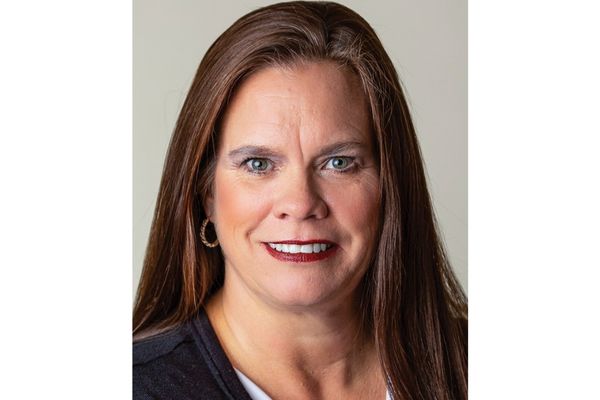October 2022: School Administrator

School Infrastructure
This issue focuses on infrastructure in school buildings and examines how districts can improve their school facilities.
Advertisement
Additional Articles
-
.png?sfvrsn=4127f625_5) Electric Buses Doubling as Power Packs
Electric Buses Doubling as Power PacksHow electric buses can support the electric grid and store emergency backup power for school districts.
-
.png?sfvrsn=77345c1e_5) Future-Ready Designs With Current Energy Savings
Future-Ready Designs With Current Energy SavingsDesign thinking. Inquiry-based learning. Future-ready skills. Flexible and adaptive practices.
-
.png?sfvrsn=577d400e_5) Federal Support for School Facility Needs
Federal Support for School Facility NeedsA few recent federal government programs have been created that can support schools in making critical improvements.
-
.png?sfvrsn=189330d2_5) Procurement in Facility Work
Procurement in Facility WorkBalancing the urgent need to address school construction or renovation with due diligence under the law.
-
 Applying ESSER Funds to Your Facilities
Applying ESSER Funds to Your FacilitiesYou should know that federal procurement regulations apply when procuring any property or services with federal funds.
-
.png?sfvrsn=31d3e96_5) Architects and Educators Working Together
Architects and Educators Working TogetherWhen school facility projects involve joint planning, the beneficiary will be students and their learning.
-
.png?sfvrsn=30be916f_5) What I Wish I Knew at the Start of Construction
What I Wish I Knew at the Start of ConstructionA former superintendent's experience with a new facility project.
-
.png?sfvrsn=bf98e9e2_5) Assessing the Physical Environment
Assessing the Physical EnvironmentA school district’s attention to long-range facility planning speaks loudly about its commitment to educating students.
-
.png?sfvrsn=5a1b24a5_5) Facility Plans Left a Superintendent ‘Perfectly Prepared’
Facility Plans Left a Superintendent ‘Perfectly Prepared’Expediting a school bond to accommodate robust student growth.
-
 Building Rapport with a Community
Building Rapport with a CommunityThe superintendent in Victoria, Texas, with a five-step approach for building rapport.
-
 Comparative Pay Ratio
Comparative Pay RatioAASA’s latest superintendent salary survey found the ratio between median superintendent salary and median salary for a starting teacher narrowed in almost all enrollment categories.
-
 Accounting for Good Intentions
Accounting for Good IntentionsHow to deal with GoFundMe payments to staff hurt economically during the pandemic that now are being taxed?
-
 School Policies That Protect Gender Diversity
School Policies That Protect Gender DiversityDeveloping district procedures, under federal law, that protect students’ rights and treat everyone with respect.
-
 The Blustery Day I Became a Facebook Live Believer
The Blustery Day I Became a Facebook Live BelieverThe livestream of the superintendent navigating snowy roads before daybreak proved an effective communication tool among parents.
-
 Reestablishing Norms at the End of a Dark Tunnel
Reestablishing Norms at the End of a Dark TunnelTransitioning your board members for good governance as the pandemic effects wind down.
-
Confident Leaders Don't Fake It
Leadership of a learning organization means checking one’s ego at the front door.
-
f68079fa-bd6d-4535-a893-a62f6eb84cda.png?sfvrsn=845c8099_3) Teachers Who Aren’t Like Me
Teachers Who Aren’t Like MeA veteran superintendent recognizes the need to attract staff to his schools whose experiences differ widely from his own.
-
.png?sfvrsn=2c854cfb_9) Re-Imagining Our School Buildings
Re-Imagining Our School BuildingsReimagining students’ learning environments to ensure future readiness.
-
 Facility Needs Ought To Be a Fit for ESSER Funds
Facility Needs Ought To Be a Fit for ESSER FundsLong overdue infrastructure projects require federal dollars.
-
.png?sfvrsn=5eea0f92_7) How Baldwin Prepares Students for Their Futures
How Baldwin Prepares Students for Their FuturesThe second column in a year-long series showcasing each of the AASA Learning 2025’s Lighthouse school districts.
-
 Community Servant to the Fullest
Community Servant to the FullestA superintendent in Wyoming models expectations through her own growth.
Staff
Editor's Note
Dilemmas to Learn From
Back in January 2012, School Administrator launched a monthly column that has become one of the most closely followed sections of our magazine over the years. That really wasn’t a surprise.
The Ethical Educator column tackles dilemmas confronting K-12 education leaders, drawing on real-world situations from inside school systems and other professional organizations that raise perplexing behavioral choices and decisions. Easy answers don’t exist.
This month’s installment marks the 119th appearance of Ethical Educator in our magazine. All that time, there’s been one constant. Among the 16 individuals who’ve generously put themselves on the line to serve on the four-person panels that analyze each challenging scenario is Shelley Berman. In the planning leadup to the column’s launch, he was the first school system leader I approached with my vision. At the time, he was in his third of four superintendencies and notably had been serving as president of Educators for Social Responsibility, a 40-year-old nonprofit with noble purposes.
Berman has been a driving force behind Ethical Educator, contributing two handfuls of the cases that have found their way into use and always pushing the leading edge. It’s fitting then that he’s the lead author, alongside David Rubin and Joyce Barnes, of a new book The Ethical Educator: Pointers & Pitfalls for School Administrators. Published just last month by Rowman & Littlefield, the work repurposes 100 of the dilemmas and analyses that have appeared in our pages over the last decade. The dilemmas encompass various aspects of school administration, from First Amendment and religious liberty issues to personnel and board relations.
While many School Administrator articles by superintendents, professors and others have served as a launching pad for book projects over the years, this marks the first time that the actual content of a published piece serves as the substantive basis of a full-length work. I hope many of you will consider ordering a copy and sharing your gratitude with Shelley Berman for his years of commitment.
A final, unrelated note: Early in November, AASA members will receive an electronic survey about their reading of this magazine as well as the association’s digital publications. We sincerely encourage you to complete the questionnaire so we can understand what you find of value, what you ignore and what might make for a better product. Be on the lookout in your inbox.
Jay P. Goldman
Editor, School Administrator
703-875-0745
jgoldman@aasa.org
@JPGoldman
Advertisement
Advertisement


.png?sfvrsn=b1df0c52_5)
.png?sfvrsn=e0fcfe4d_5)


